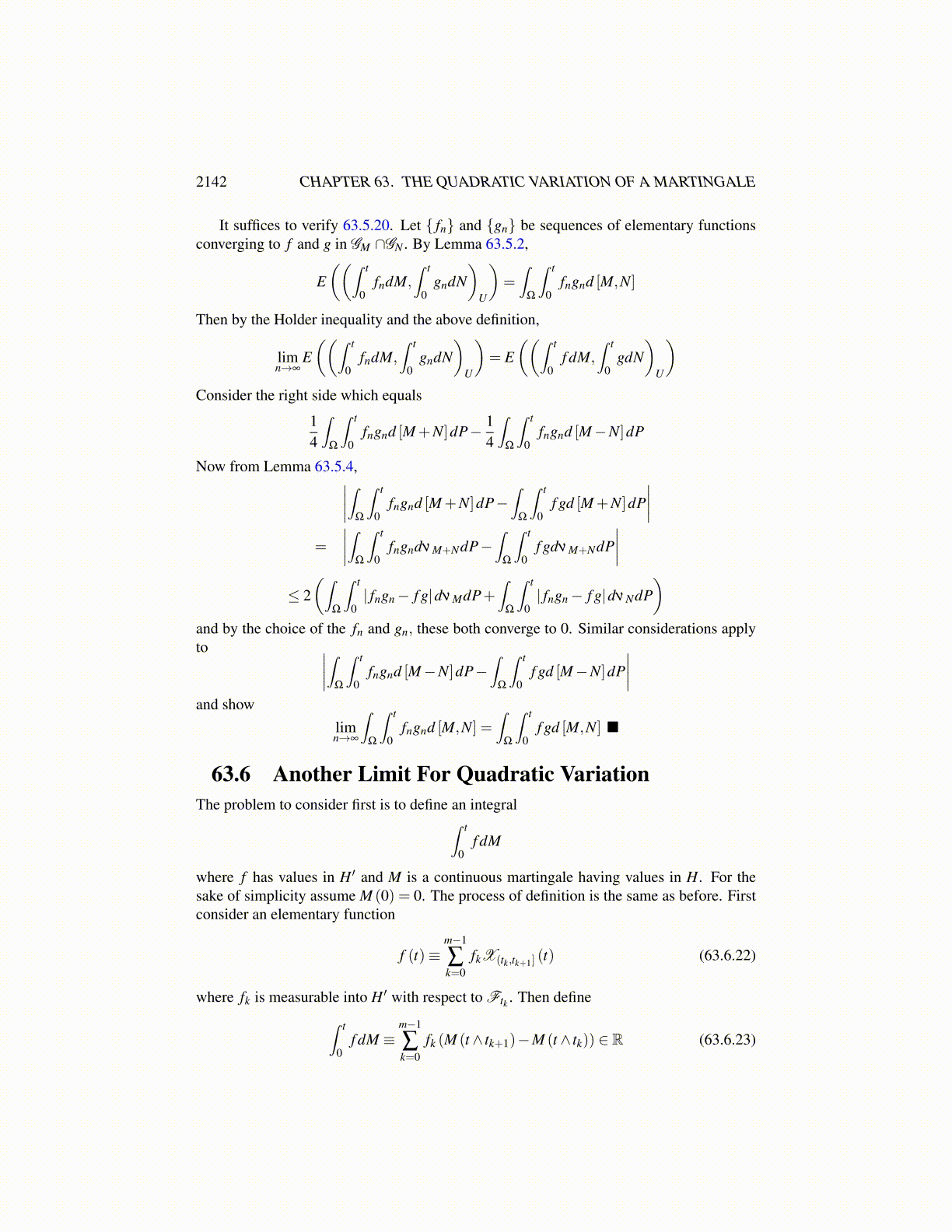
2142 CHAPTER 63. THE QUADRATIC VARIATION OF A MARTINGALE
ThusνM+N ([s, t])≤ 2(νM ([s, t])+νN ([s, t]))
By regularity of the measures, this continues to hold with any Borel set F in place of [s, t].
Theorem 63.5.5 The integral is well defined and has a continuous version which is a localmartingale. Furthermore it satisfies the Ito isometry,
E
(∣∣∣∣∣∣∣∣∫ t
0f dM
∣∣∣∣∣∣∣∣2U
)=∫
Ω
∫ t
0f (s)2 d [M] (s)dP
Let the norm on GN ∩GM be the maximum of the norms on GN and GM and denote by ENand EM the elementary functions corresponding to the martingales N and M respectively.Define GNM as the closure in GN ∩GM of EN ∩EM . Then for f ,g ∈ GNM,
E((∫ t
0f dM,
∫ t
0gdN
))=∫
Ω
∫ t
0f gd [M,N] (63.5.20)
Proof: It is clear the definition is well defined because if { fn} and {gn} are two se-quences of elementary functions converging to f in L2
(Ω;L2 ([0,T ] ,ν (·))
)and if
∫ 1t0 f dM
is the integral which comes from {gn} ,
∫Ω
∣∣∣∣∣∣∣∣∫ 1t
0f dM−
∫ t
0f dM
∣∣∣∣∣∣∣∣2 dP
= limn→∞
∫Ω
∣∣∣∣∣∣∣∣∫ t
0gndM−
∫ t
0fndM
∣∣∣∣∣∣∣∣2 dP
≤ limn→∞
∫Ω
∫ T
0||gn− fn||2 dνdP = 0.
Consider the claim the integral has a continuous version. Recall Theorem 62.9.4, partof which is listed here for convenience.
Theorem 63.5.6 Let {X (t)} be a right continuous nonnegative submartingale adapted tothe normal filtration Ft for t ∈ [0,T ]. Let p≥ 1. Define
X∗ (t)≡ sup{X (s) : 0 < s < t} , X∗ (0)≡ 0.
Then for λ > 0
P([X∗ (T )> λ ])≤ 1λ
p
∫Ω
X (T )p dP (63.5.21)
Let { fn} be a sequence of elementary functions converging to f in
L2 (Ω;L2 ([0,T ] ,ν (·))
).